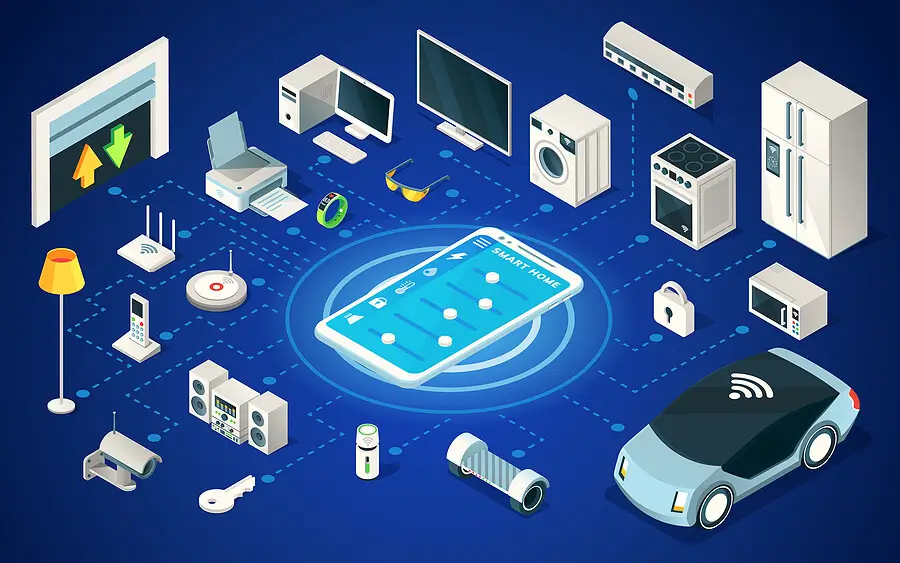It’s hard to imagine life before the Internet of Things. Not long ago, we were manually adjusting thermostats, flipping light switches, and checking appliances ourselves. Now, our phones, smart speakers, and even smartwatches handle these tasks — often without us lifting a finger. From fitness trackers to large-scale industrial equipment, IoT has quietly transformed our routines, making life smarter and more convenient.
But with every innovation comes a challenge. The more devices we connect, the more doors we open for cyber threats. IoT security is no longer just a niche tech discussion — it’s a real-world concern that impacts homes, businesses, and industries. In this guide, we’ll explore the most common Internet of Things threats and share practical steps to protect your connected world.
1. Weak or Default Passwords
Let’s be honest — most people never bother changing the default password on a new gadget. It’s easy to think, “Who’d even care about hacking my smart coffee machine?” But to an attacker, any connected device is a possible doorway. And those default credentials? Often, they’re public knowledge.
What you can do right now:
- Change the password before you even finish setting it up.
- Use a strong, unique password — no birthdays, pet names, or “12345.”
- If the device allows it, enable two-factor authentication.
A tiny step, but honestly, it shuts down one of the simplest attack methods out there.
2. Skipping Software Updates
We’re all guilty of it — an update pops up, and we click “Later.” The problem? Those updates often patch security holes. Without them, you’re essentially inviting trouble.
Better approach:
- Enable automatic updates where you can.
- If not, set a reminder to check every few weeks.
- Replace devices that no longer receive support.
Think of it as regular maintenance — like changing the oil in your car — only for your devices.
3. Unsecured Data Transfers
IoT devices “talk” constantly, sending and receiving information. If this isn’t encrypted, it’s like sending a postcard — anyone in the middle can read it. And that’s not just harmless status updates; it could include personal data or login details.
How to avoid the risk:
- Choose devices with end-to-end encryption.
- Avoid using public Wi-Fi for sensitive IoT functions.
- Consider using a VPN for extra protection.
Encryption doesn’t stop someone from intercepting the data — it just makes it useless to them.
4. Weak Network Security
You could lock down every IoT device you own, but if your network is wide open, it’s game over.
Stronger setup:
- Put IoT devices on their own separate network.
- Use strong, regularly updated router passwords.
- Monitor connected devices for anything unusual.
Think of your network as the main entrance to your digital home — it’s where you need the biggest lock.
5. Data Privacy Concerns
IoT devices are fantastic at collecting data. The problem? They sometimes collect too much. That might be fine when it’s used for improving services, but in the wrong hands, it’s a roadmap of your life.
Practical steps:
- Check the privacy settings on each device.
- Share only the information the device truly needs.
- Store important data securely — and anonymize it if possible.
Strong IoT data protection is about more than security; it’s about keeping ownership of your personal story.
6. Cheap Devices with No Security
It’s tempting to grab that budget smart gadget on sale, but low-cost often means low-security. Manufacturers sometimes skip important safeguards to cut costs.
Before buying:
- Look for brands with a track record of regular updates.
- Avoid devices from companies that abandon old models.
- Read a mix of user and expert reviews before deciding.
Paying a bit more upfront usually saves you headaches later.
7. Botnet Attacks
Some hackers aren’t interested in your device for its data — they want its power. By infecting it, they can add it to a massive “botnet” used for launching attacks elsewhere.
Prevention tips:
- Keep an eye out for strange device behavior or slow performance.
- Disable features and ports you don’t use.
- Use intrusion detection or prevention systems if possible.
If your fridge suddenly starts sending traffic to an unknown server at 3 a.m., something’s up.




